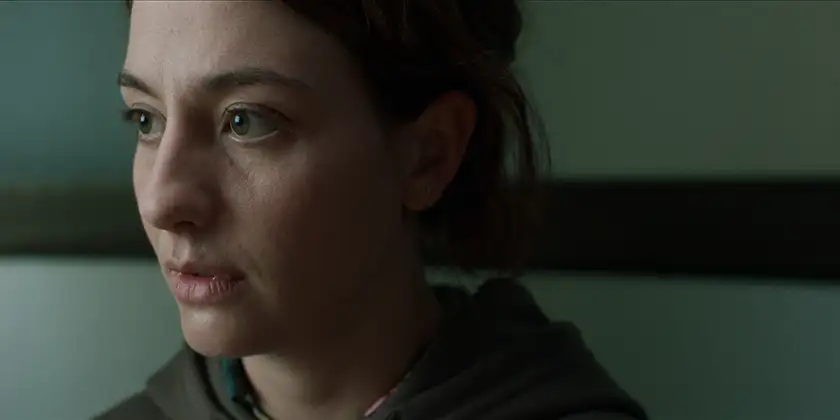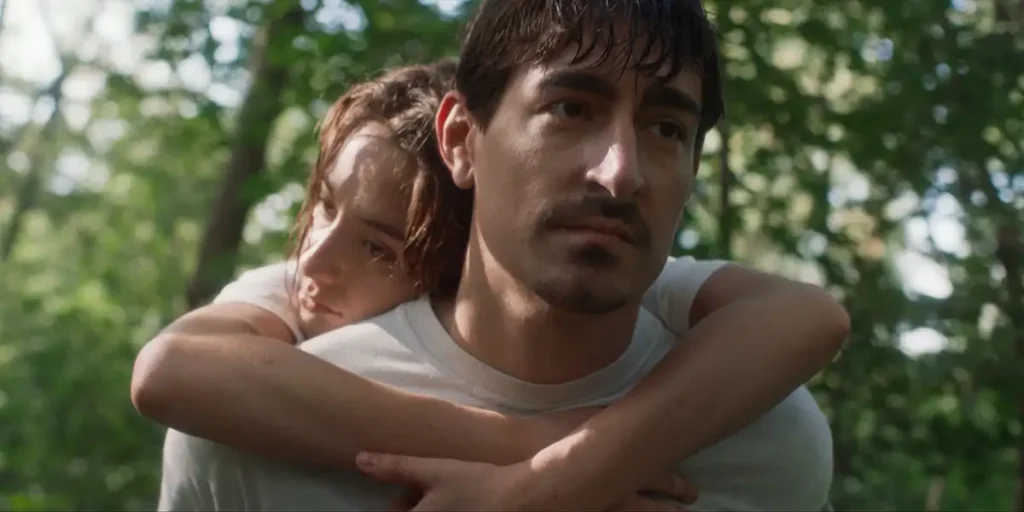With The Good Sister, Sarah Miro Fischer shows how little you need to craft an excellent, quiet narrative that doesn’t underestimate its audience.
Director: Sarah Miro Fischer
Genre: Drama
Run Time: 96′
Berlin Film Festival Screening: February 14, 2025
Release Date: TBA
Writer-director Sarah Miro Fischer bursts on the scene with her feature debut The Good Sister (Schwesterherz) by showcasing impressive resourcefulness. The slow-burn drama utilizes a minimalistic score, an effectively static camera, and several understated performances efficiently to maximize the impact of its non-showy storytelling.
Marie Bloching completely embodies the gentle and pure Rose, who feels deeply connected to her brother Sam (Anton Weil). Rose looks up to Sam and feels entirely comfortable in his presence as the only person she can rely on, but her perception of her brother begins to crack when she is unexpectedly summoned to testify in an investigation against him. When a woman accuses Sam of sexual assault, Rose is left to question her closest person in the world while wrestling with her own personal life and moral integrity.
From the opening minutes, the film facilitates Rose and Sam’s inseparable connection by hiding it in little moments of their childlike interactions and wordless communication. The first act takes its time to let us observe the affectionate siblings’ lifestyle in their natural habitat: behind closed doors – when they’re making breakfast in the morning or getting ready for bed – and in social situations, when they’re laughing with friends or celebrating birthdays in the backyard. There are plenty of minor details to pick up that speak volumes about what kind of people our lead characters are in the way they treat each other and others.
That being said, we never leave Rose’s side. Her view of her immediate world is the same as ours. Thus, the film gently paints to the viewer the same image of Sam that his sister has – a bright, beloved, giving Sam whom Rose has always admired. However, our perception of others is inherently subjective, as it rests on observations we can only make when we’re physically present with them. Can we ever really know the full 100% of who someone is? Sarah Miro Fischer effectively reminds us of that with the deliberate choice of perspective being Rose’s. Just like Rose, we, too, are somehow locked away from seeing how Sam behaves in her absence.
The inciting incident that ignites Rose’s internal dilemma is masterfully executed with a disquieting long take that leaves a lot to the imagination, both ours and Rose’s. The events are never seen, only heard, with purposefully ambiguous sound design by Jakob Mäsel that is unclear and confusing to interpret. You are left to make up your own mind as the tiny, almost unnoticeable seed of doubt is planted and whispering you may not know the full story.

From that point onward, Marie Bloching fully takes hold of the film, as her layered tour de force performance glues you to the seat for the rest of the ride. Fischer’s script allows for plenty of breathing moments that showcase Bloching’s abilities, the prime example being the scene of the first testimony that takes place at the exact midpoint of The Good Sister. For the most part, the testimony is shot in an uninterrupted tight close-up while Rose struggles to process information that’s about to change her view of her brother entirely. The prickling discomfort in the air is painfully tangible, yet your eyes can’t help but be glued to Bloching while trying to decipher the million thoughts crossing her character’s mind.
The Good Sister is at its loudest in its moments of restraint. Using certain recurring motifs and analogies, Fischer is able to strengthen the film’s impact and individual voice. Cinematic language enriches the vocabulary with which we can express and understand the complexities of such a subject. A standout moment of such impact is a scene in which Rose poses as a nude model for her fellow art students, which conveys a sense of sheer helplessness through the act of her simply posing for a painting. The longer you’re made to look, the more you see a clear picture of a woman, who feels frozen, unable to do anything about her situation. Cinematographer Selma von Polheim Gravesen successfully achieves that with a slow circling panning shot of the scrutinized Rose without the need for a single line of dialogue.
An intriguing decision in the audiovisual storytelling of the film is the recurring motif of running water through taps, showers, and hoses. Emotionally climactic highlights of the film are accompanied by an eerie dripping of tap water or a loud surge overpowering difficult moments and conversations in the sound mix. Such creative choices elevate The Good Sister beyond its slow-burn slice-of-life structure and give the film something more to say that’s worth listening in for.
Sarah Miro Fischer’s debut feature offers an experience that lingers within the audience without voicing a clear-cut reason as to why. The Good Sister’s nuanced non-verbal communication could be perceived as cryptic or imprecise, but it speaks to the film’s rewatchability and appeal.
The Good Sister: Movie Plot & Recap
Synopsis:
Rose’s loving and pure perception of her brother Sam begins to crack when Sam is legally accused of sexual assault and Rose is invited to testify as the only witness.
Pros:
- An impressive performance by Marie Bloching.
- Well-integrated sound design and cinematography choices.
- Subtle storytelling that lands.
Cons:
- Slow and meditative pacing that can turn off some viewers.
- Quite a lot of silent moments, which can be considered boring and uneventful.
The Good Sister premiered at the Berlin Film Festival on February 14, 2025. Read our Berlin Film Festival reviews and our list of 20 films to watch at the 2025 Berlin Film Festival!

